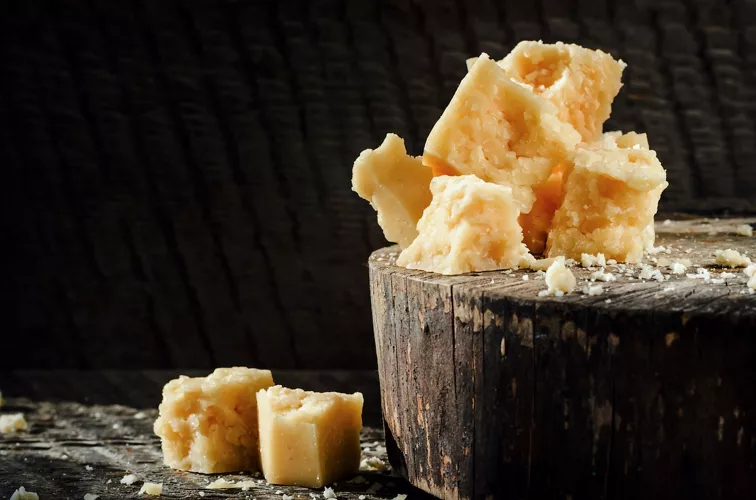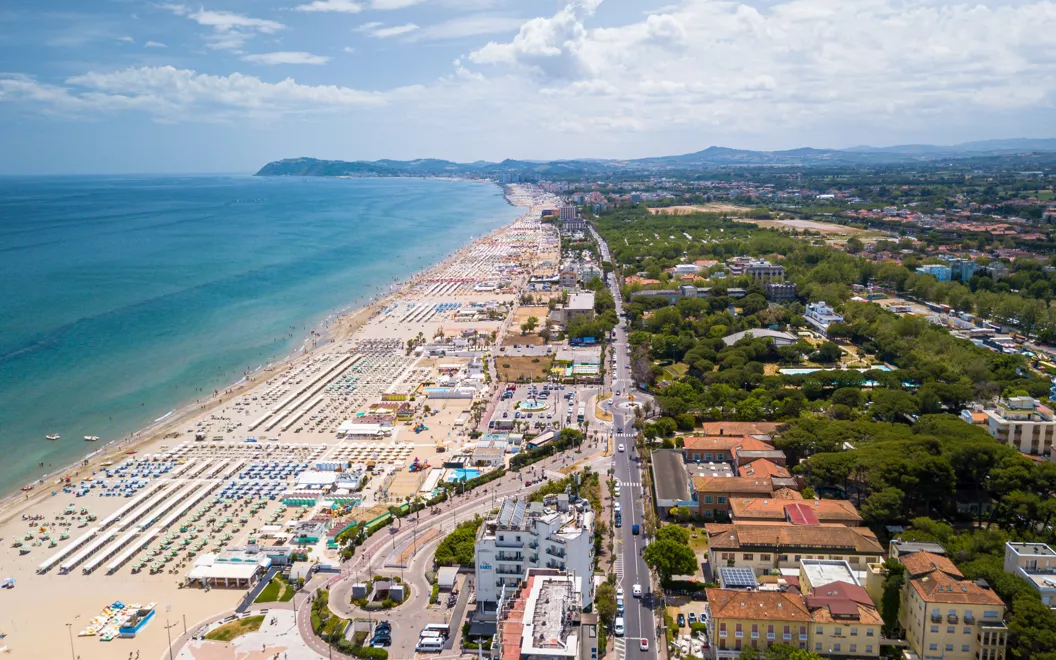a region of unrivaled charm, with immense artistic beauty and unparalleled hospitality
Emilia Romagna with its Riviera Romagnola offers beach tourism that attracts families and young people to its shores every summer. Rich in sites of historical and cultural interest, this region boasts a world-renowned wine and food tradition. Skillful hospitality does the rest, making Emilia Romagna an ideal holiday destination in every season.
1. Origins and historical notes on Emilia-Romagna

The history of Emilia-Romagna tells of two historical and geographical realities that are sometimes distinct and sometimes intertwined.
The main Italic populations that settled in Emilia
were the Celts and Etruscans, but the latter was also in the area of Romagna together with the Umbrians. The fate of the two areas became intertwined again when they were conquered by some Celtic tribes from northern Europe, including the Lingones, Senones, and Boi Gauls, with Gallic settlement (Gallia Cisalpina) and then Roman conquest until the end of the Longobard Kingdom.
Things changed when Emilia was subjected to municipal and ducal authority, and Romagna to the papal theocratic rule: the whole area became the backdrop for bloody wars between Guelphs and Ghibellines.
The inland holds numerous treasures from the period of the Ducati starting with the network of the Castles of the Duchy of Parma and Piacenza: ancient residences among villas, fortresses, and castles that bear witness to an important past.
The establishment of the University of Bologna marked an important milestone for the region, still one of the most important universities in Italy and Europe and the oldest in the western world.
Emilia and Romagna eventually became part of the new Italian state at the behest of the then-dictator Carlo Farini, who unified them with the Kingdom of Sardinia, later the Kingdom of Italy.
2. The main cities of Emilia Romagna

Among the most important cities in the region is Bologna, its lively and ancient capital. Celebrated in song by Lucio Dalla, Bologna has three nicknames: the learned one thanks to its ancient university, the fat one for its delicious cuisine, and the red one for the typical color of its roofs, which, together with the famous Towers of Bologna, give it a timeless medieval charm.
A must-see here is Piazza Maggiore, Bologna’s main square, which includes the most important buildings of the medieval city, including the Basilica of San Petronio, the fourth largest church in Italy.
Parma is a destination for food and wine tourism thanks to excellences such as Parma ham and Parmigiano Reggiano cheese, but it is also rich in terms of culture and art. The City of Verdi and Toscanini, house some musical masterpieces and Italian Mannerism.
Also of great value are the territories that belonged to the Duchy of Parma, including castles, monuments, and spas.
Rimini, on the other hand, is the heart of the Riviera Romagnola, one of the most popular tourist destinations in Italy thanks to its nightlife, beautiful beaches, and many attractions of historical interest.
One of the most important cities is Ferrara, a rare pearl: a medieval city with beautiful architecture such as the symbol of the city, the Castello Estense, as well as Villa Boccaccini.
Ravenna’s monuments are UNESCO World Heritage Sites and the city is known worldwide as the Capital of Mosaics: these are those that embellish the Basilica of San Vitale, the Basilica of Sant’Apollinare Nuovo, and the Neonian Baptistery. Good food, plenty of entertainment, theatres, and museums are wonderful side dishes.
Lastly, Reggio Emilia is considered a city on a human scale with an enviable quality of life thanks to the high level of services it offers. Its historical and artistic heritage is remarkable and its large historic center is postcard-perfect.
3. What to see in Emilia Romagna: 7 unmissable sites

Amust-see is the Riviera Romagnola, a stretch of Adriatic coastline that covers almost the entire region, stretching 91 kilometers, guaranteeing seaside holidays, relaxation, and great fun: all you have to do is choose which of the popular seaside resorts you want to visit.
Riccione or Milano Marittima, Cervia or Cesenatico, Gabicce Mare or Queen Rimini? By the way, if you chose the symbolic city of the Riviera Romagnola which was the birthplace of Federico Fellini, also make a trip to Italia in Miniatura, an amusement park that offers the Bel Paese in a miniature version.
Another unmissable stop to fully experience Emilia Romagna, especially if there are children, is Mirabilandia, one of Italy’s best-loved theme parks with an aquatic area, located just outside Ravenna.
While you’re at it, it’s worth making another quick stop in the area to take a look at Lido di Classe, a friendly town with many lidos suitable for those traveling with their pets.
If you are more interested in the charms of history, you can choose Bobbio, a small village on the Tuscan-Emilian Apennines in the province of Piacenza, known for its medieval features and the long Ponte del Diavolo (Devil’s Bridge) over the river Trebbia. It is considered one of the most beautiful villages in the area.
A relaxing break at the Terme di Tabianoin the province of Parma will appeal to the whole family, who can enjoy the curative properties of the sulfurous waters.
From here we depart for our final destination, the Po Delta Park amidst green pine forests and dense woodlands, a diverse flora and fauna population, freshwater and brackish valleys, and rivers that plunge into the Adriatic.
4. Unusual places in Emilia Romagna: 3 destinations for the curious

The more curious in search of gems will appreciate Comacchio, a town in the Po Delta called Little Venice because it is a charming lagoon town, and Brisighella, a medieval village in the province of Ravenna among the most attentive to sustainable tourism.
Far from mass tourism, but with surprising beauty, is also Bagno di Romagna, a medieval village that appeals to cyclists and motorcyclists for its routes with breathtaking views.
5. The typical products of Emilia Romagna: 5 delicacies to taste

The food and wine tradition of this area is unique and rich in genuine and seductive flavors.
Among the typical Emilian products not to be missed are Parmigiano Reggiano and Grana Padano, two hard kinds of cheese that are the main ingredients of many typical Italian dishes, to be enjoyed in pieces or grated.
Also of great value is the balsamic vinegar of Modena PDO, a condiment obtained from the long aging of the cooked must of typical Modenese grapes inside barrels. Symbols of the area are also the mortadella Bolognese, a pork-based sausage with a unique aroma, and the cherries of Vignola, a very popular variety.
6. Events in Emilia Romagna: an opportunity not to be missed

Among the spectacular events held in Emilia Romagna, there is one in particular not to be missed: the Notte Rosa, which takes place every year in the first week of July and, from dusk to dawn, transforms the 170 kilometers of the Adriatic Riviera into an explosion of lights, sounds, and images.

